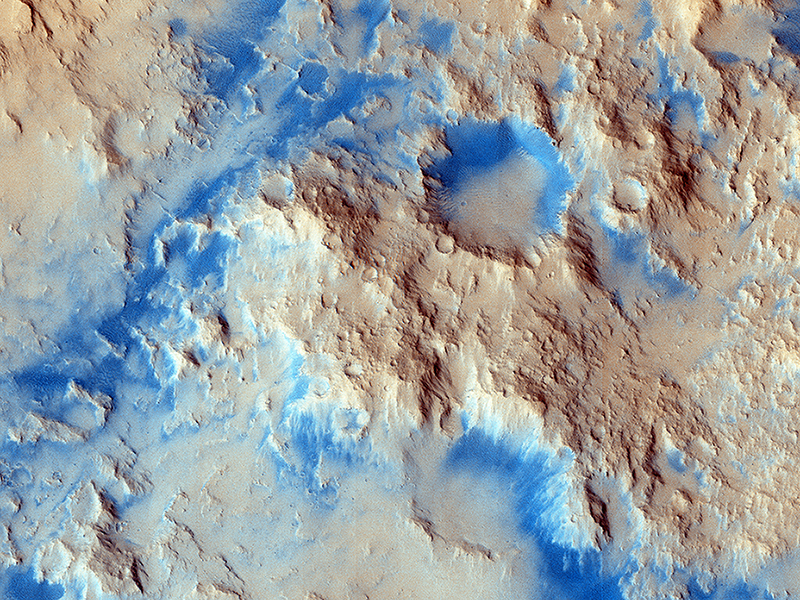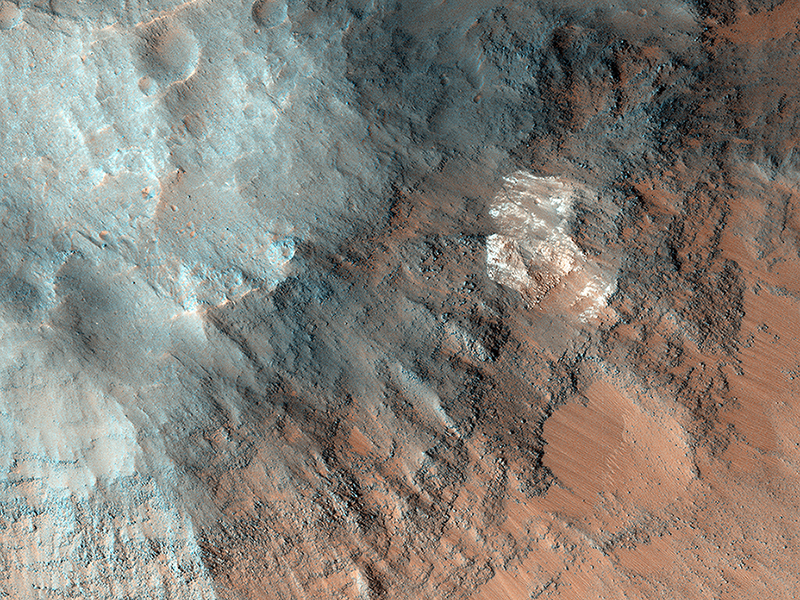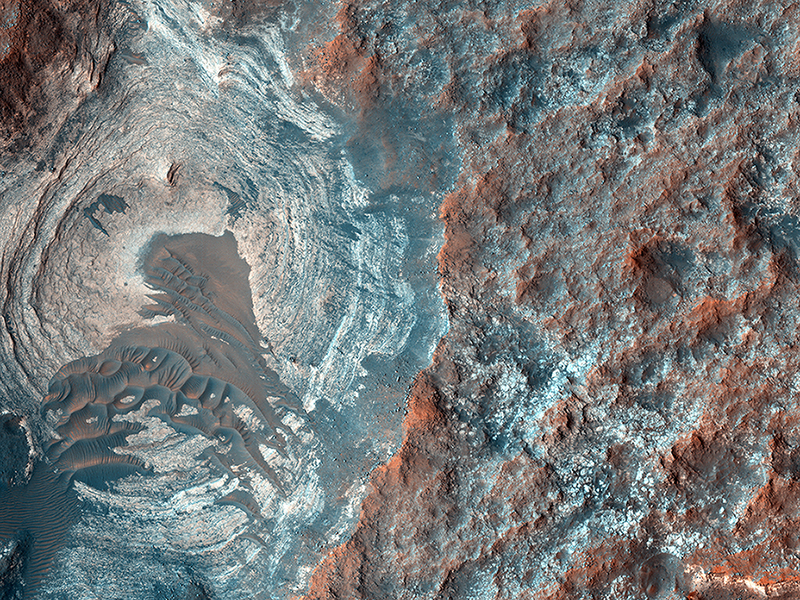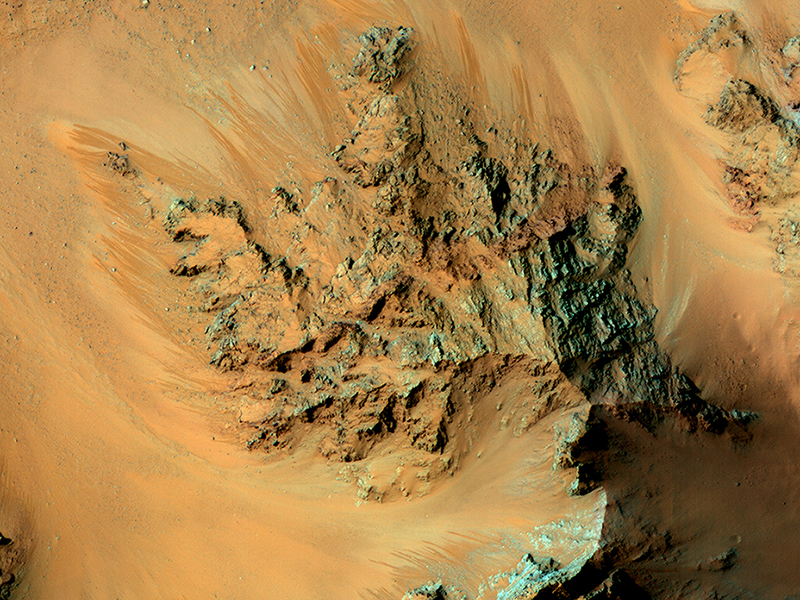HiRISE Science Team wrote:Sinuous Ridge Materials in Reuyl Crater (ESP_039424_1700) (HiClip)
There are some interesting erosional signs in this observation, which will make for a good comparison with other intracrater fans and fluvial sedimentary landforms.
We can also see an inverted channel system, possibly ponded toward the southwest. As we’ve learned recently, it’s possible that perhaps a fluid was in part of this crater, as is hypothesized for Gale Crater (see artist rendition picture) where Curiosity is exploring. At high resolution, we might be able to resolve fine-scale layering/bedding and/or large, transported clasts (boulders).
Reuyl Crater is approximately 86 kilometers in diameter and was named after Dirk Reuyl, a Dutch-American physicist and astronomer (1906—1972) who made astronomical measurements of the diameter of Mars in the 1940s.
HiRISE Science Team wrote:What on Mars is a High Thermal-Inertia Surface? (ESP_039485_1660) (HiClip)
What do we mean when we describe a surface as having “high thermal inertia”? The term refers to the ability of a material to conduct and store heat, and in planetary science, its measure of the subsurface’s ability to store heat during the day and reradiate it during the night.
What causes thermal inertia? It depends on the composition of the terrain that we’re studying. Here in Coprates Chasma, the site of this observation, we find indications of such high thermal inertia, so an image at high resolution may help us determine the composition and structure to give us an answer.
Coprates Chasma is located in the huge canyon system, Vallis Marineris. For a general overview of thermal inertia, see Nathaniel Putzig’s page.
HiRISE Science Team wrote:Layers and Dark Dunes (ESP_039581_1520) (HiClip)
The target of this observation is a circular depression in a dark-toned unit associated with a field of cones to the northeast.
At the image scale of a Context Camera image, the depression appears to expose layers especially on the sides or walls of the depression, which are overlain by dark sands presumably associated with the dark-toned unit. HiRISE resolution, which is far higher than that of the Context Camera and its larger footprint, can help identify possible layers.
Alfred McEwen wrote:Seasonal Flows in the Central Mountains of Hale Crater (ESP_040170_1440) (HiClip)
Recurring slope lineae (RSL) are active flows on warm Martian slopes that might be caused by seeping water. One of the most active sites known on Mars in in the central peaks (uplifted mountains of deep bedrock) of Hale Crater.
This image shows RSL extending downhill from bedrock cliffs, mostly towards the northwest (upper left). This image was acquired in middle summer when RSL are most active in the southern mid latitudes.
The RSL in Hale have an unusually “reddish” color compared to most RSL, perhaps due to oxidized iron compounds, like rust. Since HiRISE color is shifted to infra-red wavelengths, they are actually especially bright the near-infrared just beyond the range of human vision.
The Hale RSL are also unusual because they began activity much earlier than most RSL sites in the middle southern latitudes, and were well-developed in the early spring (see ESP_038073_1440). If seeping water causes RSL in Hale crater, it must be rich in salts to lower its freezing point significantly below the freezing point of pure water.
Credit: NASA/JPL/University of Arizona
<< Previous HiRISE Update



